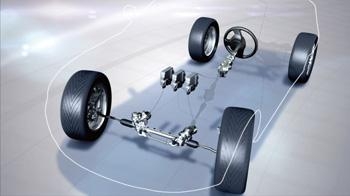Nissan has presented the first steering system that allows the control of the wheel angle independently at the wheel. This new generation address has been developed by Nissan.
Conventional management systems direct the wheel movement according to the wheel orders through a mechanical connection between them. Nissan's new direction analyzes the driver's intentions through the steering wheel movements and decides the appropriate turning angle of the wheels by electronic signals. This direction transmission is faster than the traditional mechanical system, and increases driving quality by establishing faster and more direct communication between the driver and what is transmitted from the road surface.
The system controls and isolates the vehicle by eliminating the distortions generated by the road and transfers the driver only the necessary sensations for driving. On roads with a rough surface or with small potholes the driver will no longer have the need to hold the steering wheel or make small corrections of the trajectory, so it will be much easier to maintain the desired direction.
Associated with this steering technology, Nissan has developed a system to improve linear stability when circulating in a straight line, which uses a vision camera and automatically performs small direction angle adjustments so that the vehicle maintains the line marked by the driver.
The vision chamber is installed at the rearview base, through it the system visualizes the road through which it circulates, identifies its signaling lines, detects the changes in the direction of the vehicle and transmits that information to the different control brackets of the vehicle through electronic signals so that the system processes them. If it detects a discrepancy between the analysis of the road and the position of the wheels, it acts by reducing that discrepancy controlling the force opposite to the angle of the wheels. By reducing the frequency with which the driver must make small steering corrections reduces fatigue in long displacements.
The reliability of this electronic address system is insured thanks to the work of multiple controls (ECU) of control. In the event that one of the ECUs did not work properly, another ECU would immediately take control and in extreme circumstances such as a failure in the general electrical system, an emergency clutch would act to establish a mechanical physical connection between the steering wheel and the wheels, which would allow to continue conducting with total security.
This technology will initially be mounted on certain Infiniti models during the next year by providing customers "accurate driving" and "driving without shocks."








































